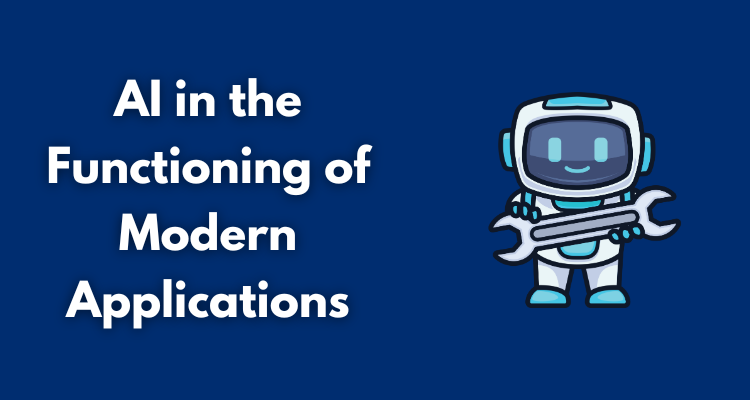It’s easy to think of artificial intelligence as the domain of chatbots, large language models, and billion-parameter algorithms running in the cloud. But beneath the buzz, AI has quietly become the operational backbone of many everyday applications — often in places you wouldn’t expect.
From personalized experiences to background automation, AI doesn’t just run apps — it makes them work. And in 2025, AI and ML development is no longer just a layer on top of software; it’s embedded deep into app logic, powering everything from optimization engines to invisible decision-making.
Table of Contents
ToggleBeyond the Front End: Where AI Actually Lives

When most people think of AI in apps, they picture recommendation engines or voice assistants. But some of the most critical roles AI plays are completely behind the scenes — in routing, prediction, load balancing, anomaly detection, and even UI adaptation.
AI now:
- Manages system behavior in real time (like adjusting app resource usage based on predicted user demand).
- Handles document recognition and classification, replacing what used to be endless manual tagging and rules.
- Monitors for fraud, abuse, or anomalies, using unsupervised learning that evolves with user behavior.
- Improves accessibility by adapting layouts and content for different users.
- Supports security and content quality by enabling tools like an AI Detector, which helps distinguish between human and machine-generated content.
Modern applications aren’t just running AI — they’re built on it.
Old Problems, Smart Solutions
One of the most interesting things about AI’s growing role in app infrastructure is how it’s breathing life into legacy tech. Take faxing, for example. Sounds outdated, right? But millions of users in legal, healthcare, education, and finance still rely on fax for secure document transmission.
So how do we modernize a communication method that’s still widely used but built for another era? Enter AI-powered fax services.
Today, platforms like free fax have integrated machine learning models to:
- Auto-detect and clean document scans
- Digitally sign or redact sensitive content
- Convert formats on the fly (e.g., PDF to TIFF)
- Route faxes securely via smart metadata extraction
All this happens without the user needing to understand what’s under the hood. The result? A legacy service that works with modern fluidity — all thanks to artificial intelligence.
AI Is Infrastructure, Not a Feature
There’s been a shift in how developers think about AI: it’s no longer something to “add” as a feature; it’s something to build with from day one. Today’s apps often rely on AI the same way they rely on HTTP or JSON — as a foundational protocol for interpreting and acting on data.
And with the growing availability of:
- Tiny on-device models
- Domain-specific foundation models
- API-first AI platforms (like Pinecone, LangChain, and even Google’s Document AI)
…it’s easier than ever to bake AI into the architecture of even the simplest productivity app.
The Real Benefit: Scaling Intelligence Without Scaling People
Why has AI become so central to app development? Simple: it lets small teams do more without hiring armies of QA testers, support staff, or data labelers. Whether it’s generating better UX flows, analyzing user behavior, or automating repetitive backend tasks, AI is the ultimate efficiency multiplier.
And for users, it means:
- Less friction
- More personalization
- Faster feedback
- Smarter defaults
Whether they realize it or not, users expect AI-level responsiveness in everything — even in something as seemingly mundane as sending a fax.
Conclusion: Invisible but Essential
Artificial intelligence has moved past being a selling point. It’s now the silent engine inside the tools we use daily. Apps in 2025 are smarter, faster, and more intuitive — not because of flashy interfaces, but because AI is handling the complexity under the surface.
Whether it’s your video editor trimming clips automatically, your writing tool correcting grammar in real time, or your document transfer app securely faxing sensitive data — chances are, AI is quietly doing the heavy lifting.
And sometimes, the smartest apps are the ones that make old workflows feel new again — just ask anyone who’s used a free fax service and never looked back.









